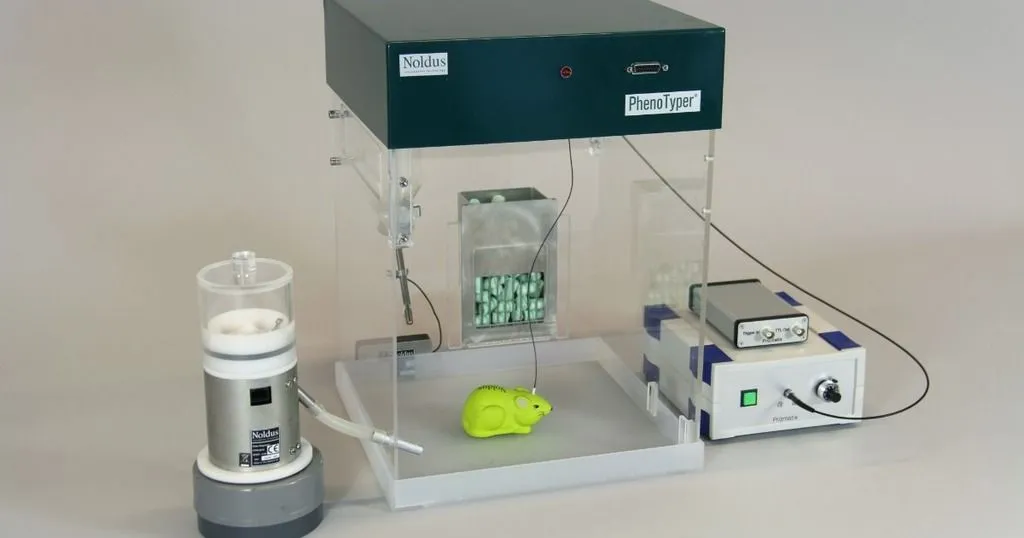Video tracking for high-throughput screening of plant resistance to thrips
A thrips is a tiny insect that can have a not-so-tiny effect on plants. A lot of research is currently carried out on how to get rid of these creatures.
Posted by
Published on
Mon 26 Sep. 2016
Topics
| EthoVision XT | Insects | Tracking | Video Tracking |
Unless you grow plants commercially, you may very well not know what a thrips is. It is a tiny insect that can have a not-so-tiny effect on plants. Thrips pierce plant leaves and flowers and suck out their contents. And, not less important, many plant viruses are known to be transmitted by thrips [1]. Needless to say, a lot of research is currently carried out on how to get rid of these creatures.
Photo courtesy of T. Bukovinszky (www.bugsinthepicture.com).
In a previous blog I explained that plants have numerous ways to defend themselves against insects. This natural variability in plant defense mechanisms offers possibilities to breed for plant varieties that are better protected against pest insects [2]. In this way we can decrease the amount of pesticides needed and produce cleaner crops. However, breeding for plant resistance requires an easy method to screen many plants at once for resistance.
Low-throughput screening
Host plant resistance to insects is generally studied with end-point measurements, such as counting the number of insects on the plants, or assessing insect damage some weeks after infestation. However, this is very labor intensive, it requires space in the order of magnitude of a greenhouse, and the results give no insight into the background of the resistance. This makes it difficult to locate resistance genes that could be used to breed for new plant lines with insect resistance.
New video tracking method
Manus Thoen and his colleagues developed a new, very promising, method to screen plants for thrips resistance [3]. They used wellplates in which they could run multiple dual-choice tests with leaf discs simultaneously. With the video tracking software EthoVision XT, they could automatically determine the time spent on either plant line. In addition to this, they automatically measured the time the thrips was moving and not moving on each plant line. Movement was assumed to be associated with searching behavior and no movement with probing and feeding. With this setup, 88 dual choice test can be run simultaneously in just 8 hours at a benchtop surface of approximately 1 m2. Compare this to the time, space, and effort needed with traditional screening methods!
New method validated
To validate the new setup, Thoen et al, compared the results of the new test with end-point measurements after 6 days with whole leaves and whole plants. In addition to this, the video tracking results were compared with those of manual annotations of the location of the thrips and whether they were moving or not. They found a very high correlation in all cases. Plant resistance was negatively correlated with the time spent on the plant line and the time not moving on this line.
High-throughput screening
At present almost 100 plant varieties can be screened simultaneously in one run of 8 hours. This makes the new method very promising for high-throughput screening for plant resistance to thrips. Hopefully, we can soon rid plants of these creatures in an environmentally friendly way.
References
- https://en.wikipedia.org/wiki/Thrips
- Wink M. Plant breeding: importance of plant secondary metabolites for protection against pathogens and herbivores. Theor Appl Genet. 1988; 75:225-33.
- Thoen, M. P., Kloth, K. J., Wiegers, G. L., Krips, O. E., Noldus, L. P. J. J., Dicke, M., & Jongsma, M. A. (2016). Automated video tracking of thrips behavior to assess host-plant resistance in multiple parallel two-choice setups.Plant Methods, 12(1), 1.
Read more
- Host-plant resistance to western flower thrips in Arabidopsis. Thoen, M. P. (2016) PhD thesis, Wageningen University, The Netherlands. http://library.wur.nl/WebQuery/clc/2177085
- https://noldus.com/blog/how-you-can-efficiently-screen-plant-resistance-aphids
- https://noldus.com/blog/Developing-a-high-throughput-method-EthoGenomics
- https://noldus.com/blog/high-throughput-screening-plant-lines-resistance-pest-insects
Related Posts

The challenges of measuring epilepsy in rodents

The welfare of therapy dogs

